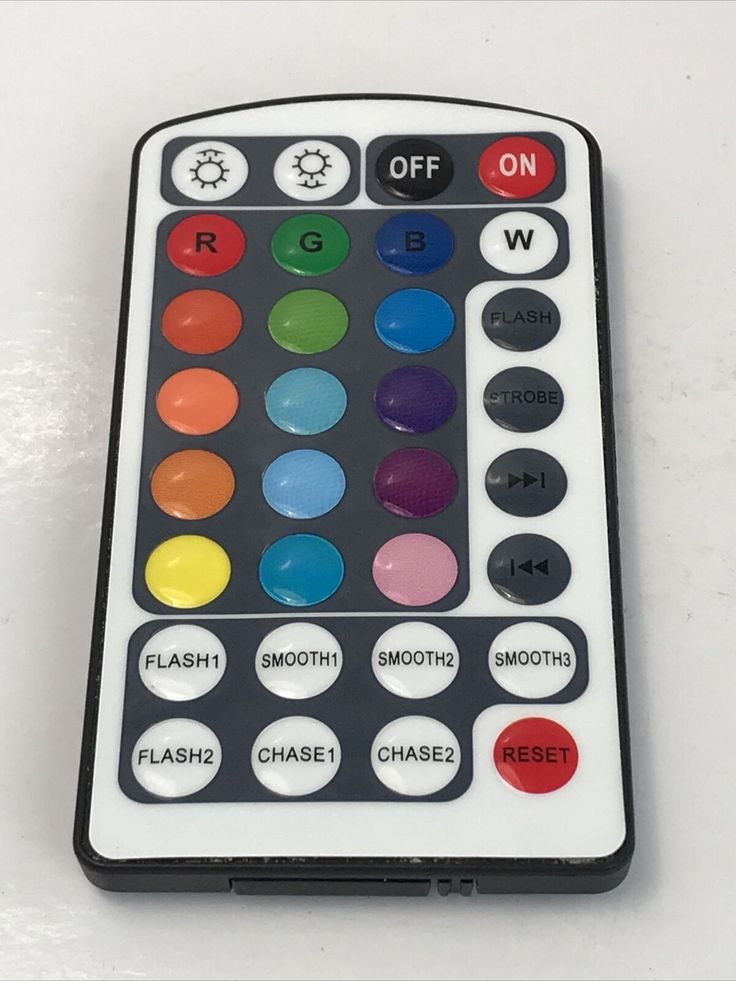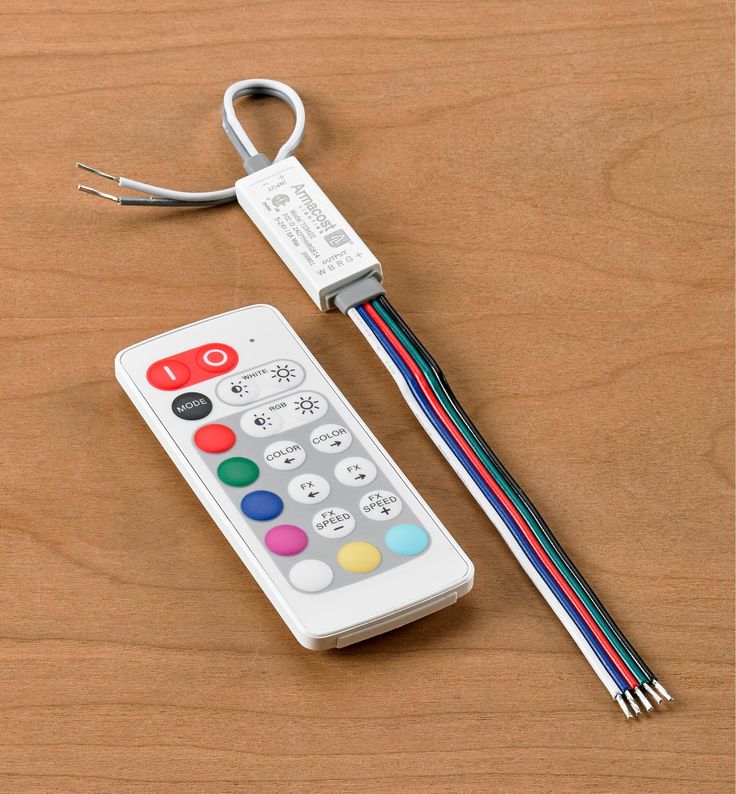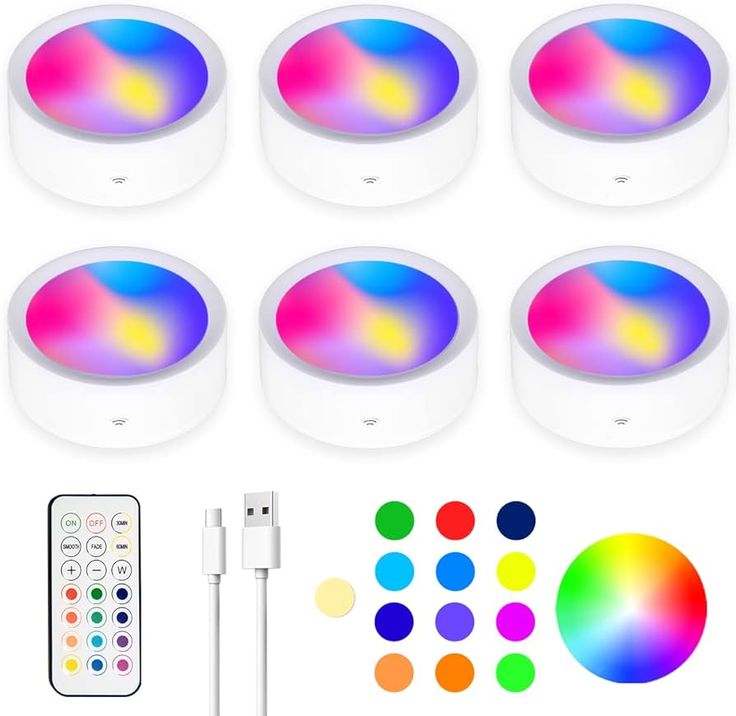Adding a touch of ambiance to your space, LED lights are a versatile choice for creating a personalized atmosphere. Whether you’re aiming for a cozy glow or a vibrant burst of color, these lights, often controlled by a convenient remote, offer a seamless way to enhance your room.
However, the frustration sets in when, unexpectedly, your LED light remote decides to go on strike. The moment you realize your LED light remote is not working can be disheartening, especially when you’re ready to set the perfect mood.
Fear not! In this guide, I’ll walk you through the process of troubleshooting and resolving the issue, ensuring you regain full control of your LED light strip. Let’s unravel the mystery together and get those lights shining again. Ready to dive into the troubleshooting journey? Let’s begin!

Lorem ipsum dolor sit amet, consectetur adipiscing elit. Ut elit tellus, luctus nec ullamcorper mattis, pulvinar dapibus leo.
Why is my LED Light remote not working ?
Adding a touch of ambiance to your space, LED lights are a versatile choice for creating a personalized atmosphere. Whether you’re aiming for a cozy glow or a vibrant burst of color, these lights, often controlled by a convenient remote, offer a seamless way to enhance your room.
However, the frustration sets in when, unexpectedly, your LED light remote decides to go on strike. The moment you realize your LED light remote is not working can be disheartening, especially when you’re ready to set the perfect mood.
Fear not! In this guide, I’ll walk you through the process of troubleshooting and resolving the issue, ensuring you regain full control of your LED light strip. Let’s unravel the mystery together and get those lights shining again. Ready to dive into the troubleshooting journey? Let’s begin!
Common Reasons for LED Light Remote Issues :
- Battery Problems
The most straightforward yet often overlooked reason for a non-responsive remote is depleted batteries. To guarantee optimum operation, check and replace the batteries on a regular basis.
- Signal Interference
Signal interference can disrupt communication between the remote and LED lights. Consider relocating either the lights or the remote to minimize interference. Additionally, be mindful of other electronic devices causing signal disruptions.
- Faulty Remote Control
Identifying signs of a faulty remote, such as unresponsive buttons or erratic behavior, is crucial. Explore DIY repair options, but be prepared to consider a replacement if the issues persist.
- Syncing Issues
Proper syncing between the remote and LED lights is essential. Consult your user manual for syncing instructions, and follow a step-by-step guide to ensure a seamless connection.
Checking and Replacing Batteries
Importance of Battery Health
The heartbeat of your LED light remote lies within its batteries. Neglecting their health can lead to a myriad of issues, including unresponsiveness and erratic behavior.
Well-maintained batteries not only ensure consistent performance but also contribute to the overall longevity of your remote.
Step-by-Step Guide for Checking and Replacing Batteries
Open the Battery Compartment
Locate the battery compartment on the back of your LED light remote. This is usually secured with a small latch or screws.
Inspect for Corrosion or Leaks
Before removing the batteries, inspect them for any signs of corrosion or leaks. If you notice any, take precautions, such as wearing gloves, and clean the affected area with a cotton swab dipped in vinegar or lemon juice.
Remove Old Batteries
Carefully remove the existing batteries, noting their orientation. Some remotes may have a spring mechanism; others may use a sliding compartment.
Choose the Right Replacement Batteries
Refer to your remote’s user manual for the correct battery specifications. Choose high-quality batteries of the same type (e.g., alkaline or lithium) and ensure they are within their expiration date.
Insert New Batteries
Place the new batteries into the compartment, following the correct polarity. The positive and negative symbols inside the compartment or on the batteries themselves can guide you.
Secure the Compartment
Close the battery compartment securely. Ensure that it latches or screws back in place snugly to avoid any loose connections.
Test the Remote
Once the new batteries are installed, test the remote by pressing various buttons to ensure responsiveness. If the LED indicator on the remote lights up, it’s a positive sign that the batteries are functioning correctly.
Dispose of Old Batteries Properly
Eco-friendly disposal is crucial. Recycle old batteries according to your local regulations or take them to designated recycling centers.
By following this step-by-step guide, you not only guarantee optimal performance from your LED light remote but also contribute to a more sustainable and efficient use of batteries. Regular checks and timely replacements ensure that your LED light remote is always ready to illuminate your space with just a press of a button.


Dealing with Signal Interference
Understanding Signal Interference
Signal interference can be the sneaky culprit behind a malfunctioning LED light remote. It occurs when external factors disrupt the communication between the remote and the LED lights. This interference can lead to issues like delayed responsiveness or a complete loss of control. Understanding the sources of interference is the first step in resolving this common problem.
Relocating the LED Lights or Remote for Better Signal Reception
Identify Potential Interference Sources
Before making any adjustments, identify potential sources of interference. Common culprits include Wi-Fi routers, cordless phones, and other electronic devices operating on similar frequencies.
Observe Signal Strength
Check the signal strength indicators on both the LED lights and the remote. If the signal is weak or fluctuating, interference may be the cause.
Relocate the LED Lights
If the LED lights have a designated receiver, consider relocating it to a position with a better line-of-sight to the remote. Avoid placing it behind obstacles or in areas where signals may be obstructed.
Reposition the Remote
Experiment with repositioning the remote control. Ensure there are no obstacles between the remote and the LED lights. A direct line of sight often improves signal reception.
Adjust the Antenna (if applicable)
Some LED light systems have antennas on either the remote or the lights. If applicable, adjust or extend the antenna for better signal reception.
Minimizing Electronic Device Interference :
Turn Off Nearby Devices
Identify and turn off electronic devices in the vicinity that may operate on similar frequencies. This includes Wi-Fi routers, cordless phones, and other remote-controlled appliances.
Change Wi-Fi Channels
If Wi-Fi interference is suspected, consider changing the channel on your Wi-Fi router. This can help reduce overlap with the frequency used by the LED light remote.
Use Shielded Cables
If your LED lights are connected to other electronic devices, use shielded cables to minimize electromagnetic interference.
Separate Power Sources
Avoid connecting the LED lights and other electronic devices to the same power source or outlet. This helps reduce the chances of electrical interference.
By implementing these measures, you can significantly improve the signal reception between your LED light remote and the lights. Identifying and mitigating sources of interference ensures a smoother and more reliable experience, allowing you to control your LED lights without disruptions.
Troubleshooting a Faulty Remote Control
Identifying Signs of a Faulty Remote:
Recognizing the early signs of a faulty LED light remote is crucial for timely intervention. Common indicators include unresponsive buttons, erratic behavior, or a complete lack of function. If you notice these issues, it’s time to delve into the troubleshooting process.
Repair Options and DIY Tips
- Cleaning the Remote
Dust and debris can accumulate over time, affecting the internal components. Use a soft, dry cloth or a cotton swab to clean the buttons and the surface of the remote gently.
For stubborn grime, lightly dampen the cloth with rubbing alcohol.
- Checking for Loose Components:
Inspect the remote for any loose parts or connections. Tighten screws or secure any components that may have become dislodged.
- Resetting the Remote
Some remotes have a reset button or a combination of button presses that initiate a reset. Consult your user manual for instructions on resetting your specific remote model.
- Testing with New Batteries
Faulty batteries can sometimes mimic issues with the remote itself. Replacing the batteries with fresh ones is a simple yet often effective troubleshooting step.
- Inspecting for Physical Damage
Examine the remote for any visible signs of physical damage, such as cracks or breakages. If the damage is severe, repair may not be feasible, and replacement might be the best course of action.
Consideration of Replacement
After exhausting DIY repair options, it’s essential to consider the possibility of replacing the remote. If the remote continues to exhibit issues despite your best efforts, investing in a new one can save you from prolonged frustration.
Choosing a replacement remote that is compatible with your LED lights is crucial. Check with the manufacturer or explore universal remotes that support your specific LED light system. Additionally, consider upgrading to a more advanced remote that may offer additional features or improved functionality.
By identifying signs of a faulty remote early on and exploring repair options, you can extend the lifespan of your LED light remote. However, when all else fails, embracing the prospect of a replacement ensures continued convenience in controlling your LED lights.
Syncing Issues and Solutions
Importance of Proper Syncing:
Proper syncing between your LED light remote and the lights are the linchpin of seamless control. When syncing is off, you may encounter issues such as unresponsive buttons or inconsistent functionality.
Understanding the importance of this synchronization process is crucial for maintaining optimal performance.
Step-by-Step Guide for Syncing the Remote with LED Lights
Refer to the User Manual :
- The user manual accompanying your LED lights provides specific instructions for syncing the remote. Refer to this guide for model-specific steps.
Ensure Proper Power Supply :
- Before initiating the syncing process, ensure that both the LED lights and the remote have sufficient power. Replace batteries if needed and confirm that the lights are properly connected to a power source.
Turn Off Other Electronic Devices:
- Electronic interference can disrupt the syncing process. Turn off nearby electronic devices or appliances that may interfere with the communication between the remote and the LED lights.
Locate the Sync Button:
- Your LED light system may have a designated sync button on either the remote or the lights themselves. Locate this button before proceeding.
Press the Sync Button on the LED Lights:
- If there’s a sync button on the LED lights, press it and wait for an indication that the lights are ready to sync. This may involve a blinking LED light or a color change.
Press the Sync Button on the Remote:
- Simultaneously, press the sync button on the remote control. Ensure that you hold it down for a few seconds to allow the syncing process to initiate.
Observe the Indicators:
- Pay attention to any indicators, such as blinking lights on the remote or the LED strip. These indicators typically signal successful syncing.
Test the Remote:
- After syncing, test the remote by pressing various buttons to control the LED lights. Confirm that the lights respond promptly and as intended.
Repeat if Necessary :
- In some cases, syncing may require multiple attempts. If the initial sync is unsuccessful, repeat the process by starting from step 4.
Consult Customer Support:
- If syncing issues persist, consult the manufacturer’s customer support for assistance. They may provide additional troubleshooting steps or offer guidance specific to your LED light system.
By following this step-by-step guide, you can ensure that your LED light remote and lights are in perfect harmony. Proper syncing not only resolves issues but also enhances the overall user experience, allowing you to control the ambiance of your space effortlessly.
Maintenance Tips for LED Light Remotes
Regular Cleaning:
Regular cleaning is essential for maintaining the optimal functionality of your LED light remote. Dust and debris accumulation over time can hinder button responsiveness and overall performance. Follow these steps for effective cleaning :
- Use a Soft, Dry Cloth:
Gently wipe the surface of the remote with a soft, dry cloth to remove dust and loose particles. This helps prevent buildup that may affect button operation.
- Cotton Swab for Buttons:
For more detailed cleaning, use a cotton swab slightly dampened with rubbing alcohol to clean in and around the buttons. This helps remove any stubborn grime or residue.
- Avoid Liquid Cleaners:
Refrain from using liquid cleaners directly on the remote, as excess moisture can damage internal components. Stick to a minimal amount of rubbing alcohol for effective cleaning.
Proper Storage:
Proper storage is crucial for preserving the longevity of your LED light remote. Take the following steps to protect your remote from potential damage and ensure it’s always ready for use:
- Designate a Storage Space:
Choose a designated storage space for your LED light remote when not in use. This prevents it from getting lost or damaged in clutter.
- Avoid Prolonged Sun Exposure:
Keep the remote away from direct sunlight, as prolonged exposure
Pros of “Why Is My LED Light Remote Not Working” Issue
- Increased Troubleshooting Skills:
- Users gain a better understanding of common issues and develop skills for troubleshooting remote problems.
- Empowerment with DIY Solutions:
- Learning to diagnose and address problems independently can empower users to resolve issues without professional help.
- Potential Cost Savings:
- DIY repairs can save users money that might be spent on professional services or purchasing a new remote.
- Optimized Remote Maintenance:
- Regular troubleshooting and maintenance practices can lead to a longer lifespan for the LED light remote.
- Enhanced User Experience:
- Resolving issues improves the overall user experience, ensuring seamless control of LED lights.
Cons of “Why Is My LED Light Remote Not Working” Issue
Technical Complexity:
Advanced issues may require technical expertise, posing challenges for users with limited knowledge.
Possible Need for Replacement:
Irreparable damage may necessitate purchasing a new remote, incurring additional costs.
Time-Consuming Troubleshooting:
The troubleshooting process can be time-consuming, causing temporary inconvenience in using LED lights.
Skill Dependency:
Not all users may have the technical skills needed for DIY repairs, requiring external assistance.
Frustration and Disruption:
Dealing with remote issues can lead to frustration and disrupt the expected seamless experience with LED lights.
Understanding these features, pros, and cons helps users navigate and address issues effectively, ensuring a better experience with their LED light remotes.
Frequently Asked Questions (FAQs)
- Q: Why is my LED light remote not working despite having new batteries?
A: The issue might extend beyond battery replacement. Explore troubleshooting steps such as checking for signal interference, syncing problems, or potential faults in the remote itself.
- Q: Can I clean my LED light remote with liquid cleaners to improve functionality?
A: No, it’s advisable to avoid liquid cleaners as they can damage internal components. Stick to a soft, dry cloth for regular cleaning, and use a slightly dampened cotton swab with rubbing alcohol for detailed cleaning around buttons.
- Q: What are the signs of a faulty LED light remote, and can I repair it myself?
A: Signs of a faulty remote include unresponsive buttons or erratic behavior. You can attempt DIY repairs, such as cleaning buttons or resetting the remote. However, if issues persist, professional repair or replacement might be necessary.
- Q: How can I prevent signal interference from affecting my LED light remote?
A: To minimize signal interference, consider relocating either the LED lights or the remote for better reception. Additionally, turn off nearby electronic devices and avoid placing the remote in areas with potential signal disruptions.
- Q: What should I do if my LED light remote doesn’t sync with the lights?
A: Refer to your user manual for syncing instructions. Follow a step-by-step guide, ensure the proper power supply, and press the sync buttons on both the remote and LED lights. If issues persist, consult the manufacturer’s customer support for assistance.
Conclusion
In the realm of LED light remotes, the journey to understand and resolve the perplexing question, “Why is my LED light remote not working?” has been an enlightening one. By exploring the common features of this issue, including battery problems, signal interference, faulty remote controls, syncing issues, and environmental factors, users gain valuable insights into the complexities of remote functionality.
The pros and cons associated with tackling this issue bring forth a balanced perspective. On the one hand, users are empowered with increased troubleshooting skills, potential cost savings through DIY solutions, and an optimized approach to remote maintenance.
On the other hand, the technical complexity of some issues, the possibility of needing a replacement, and the time-consuming nature of troubleshooting present challenges.
As users delve into the nuances of maintaining their LED light remotes, the importance of regular cleaning, proper storage, and avoiding extreme temperatures becomes evident.
These simple yet effective practices contribute to an enhanced and prolonged user experience, ensuring that the LED lights continue to illuminate spaces seamlessly.
In conclusion, the quest to unravel the mysteries behind a non-working LED light remote is a journey filled with learning and empowerment. Armed with the knowledge gained from troubleshooting, maintenance tips, and a deeper understanding of the features and challenges, users can navigate the realm of LED light remotes with confidence.
So, the next time your LED light remote poses a problem, fear not; armed with the right knowledge, you’re ready to shine a light on the solution.
As an Amazon Associate I earn from qualifying purchases.